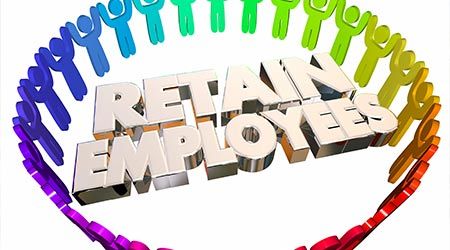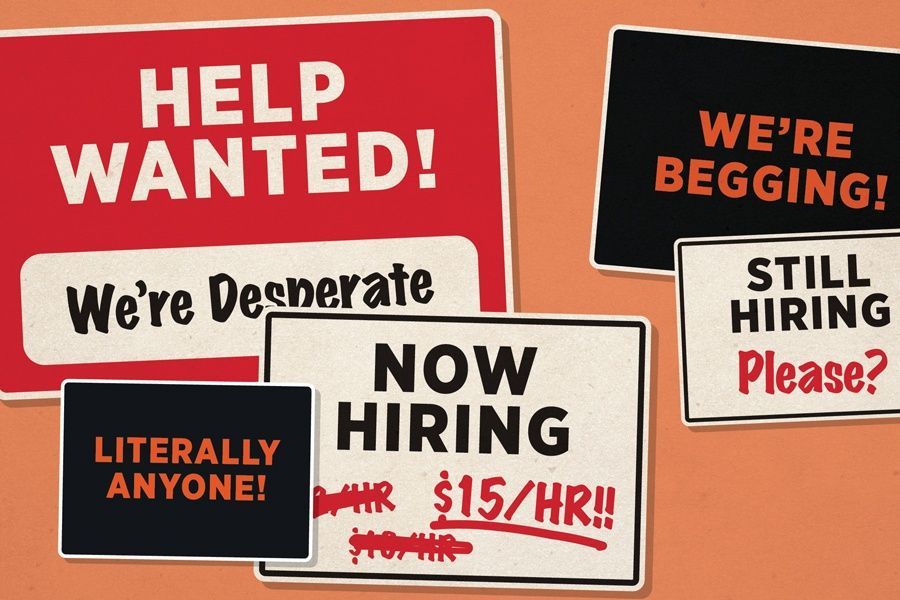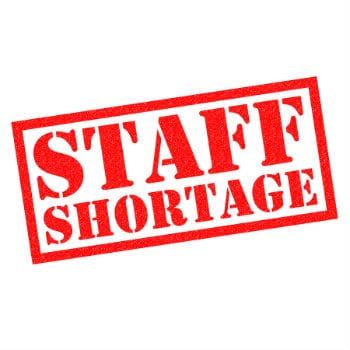Why Can’t We Keep Front-line Workers?
Almost weekly in 2023 I have been asked by a human services agency leader – why can’t they recruit and retain a front-line workforce they need and that is essential for service delivery.
And every time I give the same answer. We know from the numerous studies of Gen Y and Gen Z (workers under the age of 41) what they need from the workplace. Yet almost no agency seems willing to let go of long-standing practices that do not work with the younger generations.
The first step is retaining a younger front-line workforce is hiring them. There are proven steps that attract younger workers, again based in the studies done of these generation Y and Z workers.
Below are just some of the most recent studies that echo the same message – we, the organization’s leaders must become willing to change how we operate our HR and supervision as well as how we establish organizational values that will be attractive to them (and that we live by).
For Gen Y and even more so for Gen Z we must be able to articulate our values and act as an organization according to those values.
More than half of U.S. workers — 61% — are considering leaving their jobs in 2023, a new report from LinkedIn has found, noting that a higher percentage of Gen Z (defined by LinkedIn as ages 18-25) and millennial (ages 26-41) workers are planning to call it quits than any other generation.
In the LinkedIn survey, 87% of Gen Z employees are looking to train their skills to advance their career. Even more, 46% are confident in pushing for a promotion or finding a better opportunity.
A recent Adobe survey of 5,500 workers found that 56% of those ages 18–24 say they are planning to switch jobs in the next year. Research from Microsoft and Bankrate backs this up, reporting that 54% and 77% of Gen Zs, respectively, are thinking about quitting.
After discovering that nearly half of America’s workforce is job searching or keeping an eye out for new opportunities, researchers from Gallup concluded that “the great resignation is really the great discontent.” Rather than being an issue with pay or industry, the researchers said: “The pandemic changed the way people work and how they view work … Reversing the tide in an organization requires managers who care, who engage, and who give workers a sense of purpose.”
Due to their lived experiences, Gen Z workers expect both meaning and purpose at work — and leaders must figure out how to give it to them. As Ryan Roslansky, CEO of LinkedIn, wrote: “It’s clear that this Great Reshuffle conversation is not just about how we work, but why we work. It’s about employers too, as they innovate to attract and retain talent with a new level of focus on employee fulfillment — which, ultimately, will help drive better business outcomes.”
Retention requires an intentional commitment to responding to their unique needs and demands. The war for talent is imminently pressuring leaders to provide their next gen employees: 1) the space to unpack social action debates; 2) the sensitivity to avoid burnout by minimizing mindless administrative duties and offering greater workplace flexibility; and 3) the awareness of “hearing” them, followed by expressions of value and gratitude.
Gen Zers don't share older generations' hang-ups about "job-hopping", according to a new study by management consulting firm Oliver Wyman. They're happy to ditch unfulfilling jobs that don't offer the perks they want — and are always on the lookout for something better.
Indeed, 70% of Gen Zers who say they're "loyal" to their employers are either actively or passively seeking a new job, the research found.
Oliver Wyman surveyed 10,000 Gen Zers aged 18 to 25 in the US and the UK in an attempt to analyze how "the largest and most disruptive generation ever" will affect long-established business practices.
More than previous generations, they're even prepared to jump ship without a backup plan, the survey found.
Gen Z views work in "a more transactional manner" than previous generations, and has a "lengthy list of demands," per Oliver Wyman's study. In particular, they want jobs that include benefits such as comprehensive healthcare coverage and mental health support, as well as institutional transparency.
They're also increasingly demanding flexibility — and they're prepared to quit if they don't get it. Many of them started working during the pandemic, when most offices were shuttered, so have "no interest in soul-sucking commutes," respondents said.
For Gen Z, the issues of salary disparity, a desire for work-life balance, toxic work environments, and the pursuit of passion for meaningful work emerge as crucial factors shaping this generational trend. msn.com
Gen Z & Millennials Would Rather Be Unemployed Than Unhappy at Work
Dawn Allcot, Yahoo Financial April 6, 2022
More than half of employees (56%) age 18 to 24, a demographic classified as Gen Z, say they would quit a job that prevented them from enjoying their lives, a new survey suggests.
Forty percent of this demographic said they would “rather be unemployed than unhappy working in a job they didn’t like,” according to the 2022 Randstad Workmonitor report. The survey polled 35,000 employees across 34 markets and showed dramatically changing attitudes in the workplace — potentially sparked by the pandemic — as exemplified by The Great Resignation.
The younger generations aren’t just paying lip-service to work/life balance and personal fulfillment, either. Forty percent of Gen Z and millennial respondents said they had quit a job because it didn’t fit with their personal life, compared to 33% of those polled, overall.
The study also outlined the top five work priorities for employees, with an emphasis on what will help employers attract and retain Gen Z and millennial workers (classified as those aged 18 to 24 and 25 to 34, respectively).
- Lifestyle and Happiness: No.1 on the list, employees seek a “fulfilling work experience,” or a company attitude that helps them fit their work around their personal life. Three-quarters of Gen Z respondents said work is important to their lives, while only 68% of older respondents said the same.
- Aligning Values: Among all demographics, 43% of respondents said they wouldn’t join a company if the organization’s social and environmental values didn’t align with their own. Similarly, 41% said they wouldn’t work for a company that didn’t promote diversity and inclusion in the workplace.
- Employee Empowerment: While job training and personal development are important, employees are still seeking the right monetary incentives and benefits. Within the past year, according to the survey, only 22% of employees said they received better benefits such as more time off, better healthcare, or access to more robust retirement benefits. Meanwhile, 33% said they received either a raise, training, or workplace development offerings.
- Job Flexibility: According to the survey, nearly 75% of employees said a flexible work location is important, while 83% said flexible hours to support their lives is crucial. However, only about one-quarter of employers currently offer both remote work and flex-time.
- Self-improvement and Professional Development: Just as employees want work to fit in with their values and their lifestyles, they also expect their workplace to complement and support their development goals. Eighty-eight percent of respondents across age groups said they would like to participate in learning and development programs if their organizations offered them. Sixty percent said they’d like workshops or education on how to earn more money. Half said they wanted tips on how to achieve a better work / life balance, and 40% wanted to learn how to advance in their career, the study showed. Only 25% of employees polled, however, said they were offered training and development opportunities in their workplace.
The study highlights many of the gaps between what today’s workers want and what employers deliver. To combat the effects of The Great Resignation, employers need to focus on more than just competitive wages and employee benefits, but deliver what will really make a difference to today’s younger generations and up-and-coming workers.
If your agency is challenged to recruit and retain the workforce you need and you, as the organizations leaders, are willing to let go of practices that don’t serve you any longer, then give me a call or drop me an email.
The first step is a one-day workshop for senior staff, HR, IT, Finance and program leadership to jointly look at what Gen Y & Z want and what your agency can do. The outcome of the day is a plan of action defining what your agency and your staff need to do including procedures, documents training and institutional practices changes.
LEADING FROM OUTSIDE THE BOX is a monthly newsletter for human services leaders.
Its purpose is to challenge your thinking and help you improve organizational and outcome performance.
To receive your copy free, simply email Jeff Bormaster and ask to be added to the mailing list. Feel free to share these newsletters with other human services leaders, simply include the contact information.
You can read previous issues of Leading Outside the Box at www.jeffbormasterconsulting.com/topics











